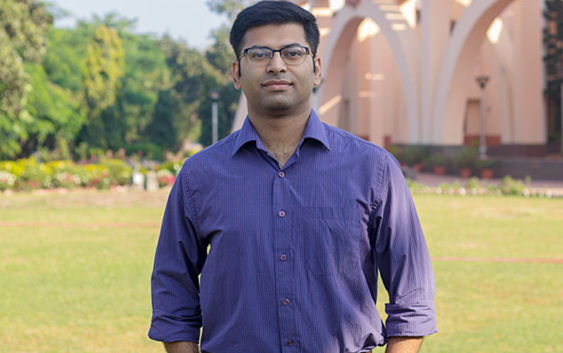- Over 50gw of solar installations in india are protected by socomec pv disconnect switches, driving sustainable growth
- Draft Karnataka Space Tech policy launched at Bengaluru Tech Summit
- एसर ने अहमदाबाद में अपने पहले मेगा स्टोर एसर प्लाज़ा की शुरूआत की
- Acer Opens Its First Mega Store, Acer Plaza, in Ahmedabad
- Few blockbusters in the last four or five years have been the worst films: Filmmaker R. Balki
If cases continue to grow at the current rate, we might witness 2500 cases by April end.

COVID-19 Predictions for Madhya Pradesh: A Research by Professor Sayantan Banerjee & his collaborators
- Development of contact tracing capabilities, rapid testing, ramping up the healthcare system are the supreme need of the hour.
- Public needs to be more aware about social distancing and basic hygiene.
With the increasing number of COVID19 cases in India; especially in Indore, Madhya Pradesh;IIM Indore faculty Professor Sayantan Banerjee, along with his collaboratorsProf.Veera Baladandayuthapani (U.Michigan), Rupam Bhattacharyya (U.Michigan), Sariq Mohammed (U. Michigan) and Prof.Upali Nanda (HKS and U. Michigan)are researching to develop a predictive model for COVID-19.
‘We are using publicly available data on reported cases and our method uses a network-based Susceptible-Infected-Recovered (Network SIR) modelling approach. We take the infected individuals as nodes of the network and two nodes are connected if they have geographical proximity. We then extract the state-level network determined by their location and susceptible individuals are determined by the population density’, says Professor Banerjee.
If the disease progression continues at the current rate, then we shall be witnessing around 2500 cases by end of April and more than 50,000 cases by end of May. This might be controlled to around 650 cases and 3000 cases respectively if the disease progression becomes mild, he adds.
The researchers also have taken into consideration simulated situations for the number of hospital beds that the state might need, based on the current number of beds available across the state, and under various scenarios of growth of the pandemic. With interventions, assuming the doubling rate of the number of cases to be around 10 days, the peak may be observed during mid-May, with around 12000 (for 25% occupancy), 21000 (for 50% occupancy) and 27000 (for 66% occupancy) additional beds necessary during that period.
‘It should be noted that these predictions are susceptible to extremely high levels of uncertainty, primarily owing to the reason that the actual number of affected individuals is unknown. A robust way to achieve accuracy is to resort to increased levels of strategic testing. Along with this, the model complexity can be increased by tracking the disease condition of the subjects (mild, severe, or critical), subject to availability of the requisite data’, he said.
Lockdown might be viewed as a short-term strategy to buy more time to reduce the pressure on the healthcare system by delaying the onset of the disease, however including rapid testing, contact tracing, and identification of hotspots, are additionally required during the period of lockdown to contain the same.
The team suggests that public needs to be more aware of social distancing and basic hygiene. Apart from this, extending critical care facilities in hospitals, therapeutic interventions for drug development, ensuring sufficient supply of medical equipment and protective gear for staff, building temporary care-giving facilities, are necessary. The team notes that ensuring proper supply of essentials, including medicines, by the administration to the citizens would also help in an effective lockdown.


